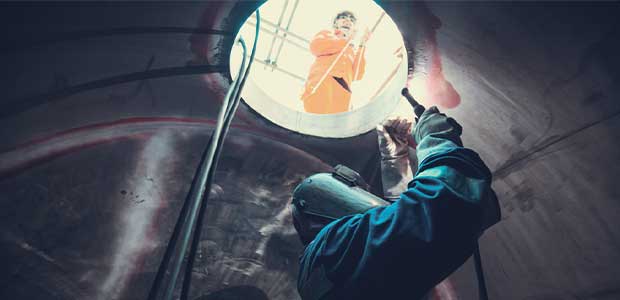
Confined but Not Alone: Protecting Workers in Tight Spaces
Understanding the risks of confined spaces can help keep entrants safe.
- By Gen Handley
- Sep 01, 2022
How many of you feel uncomfortable in small, confined spaces? Quite a few of you. While some level of claustrophobia is fairly normal, there are those who choose to work in confined spaces, even thriving in such environments. However, confined working environments can be dangerous for a number of reasons, which you will see below.
Working in confined spaces presents a number of unique occupational health and safety challenges and safety hazards which can be fatal when proper safety protocols and strategies are not implemented and employed within the team.
What is a Confined Space?
When you think of a confined space, what comes to mind? “Confined space” can be a subjective term, depending on our spatial comfort levels and physical size. If you ask OSHA, they would tell you that a confined space is a work area large enough for the worker to enter and perform tasks, but is not designed for people. They add that a confined space “also has limited or restricted means for entry or exit and is not designed for continuous occupancy.”
Under OSHA’s 1915.84: Working alone safety regulation, whenever a worker is doing their job alone, “such as in a confined space or isolated location, the employer shall account for each employee” regularly throughout their shift via some form of communication.
Who Works in Confined Spaces?
People who work in confined spaces can come from a wide range of industries and backgrounds, some of which require them to perform their jobs in tight areas more often than others.
According to the U.S. Bureau of Labor Statistics (BLS), from 2011 to 2018, the top five occupations with the most confined spaces-related deaths were:
- Construction laborers
- Farmers, ranchers, and other agricultural managers
- First-line supervisors of construction trades and extraction workers
- Plumbers, pipefitters, and steamfitters
- Farmworkers and laborers, for crops, nurseries and greenhouses
The incidents that killed these people included trench collapses, fall to a lower level, inhalation of harmful substance, engulfment of other collapsing materials, fire and explosions, as well as running machinery.
This article originally appeared in the September 1, 2022 issue of Occupational Health & Safety.